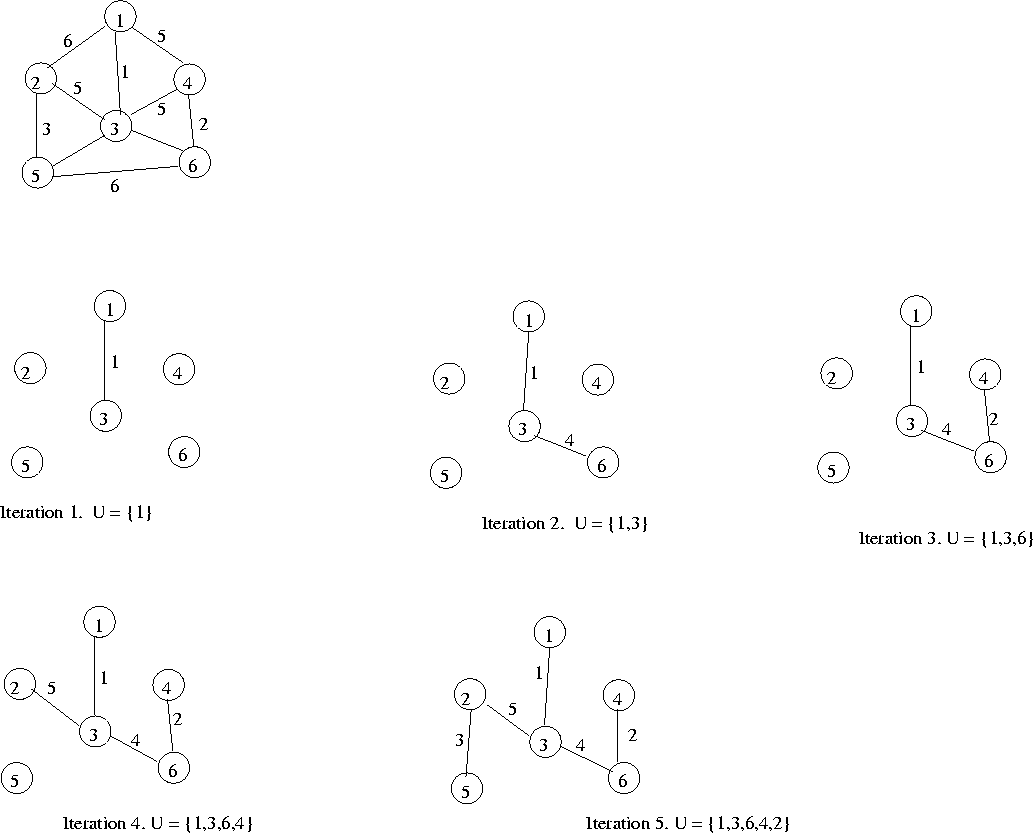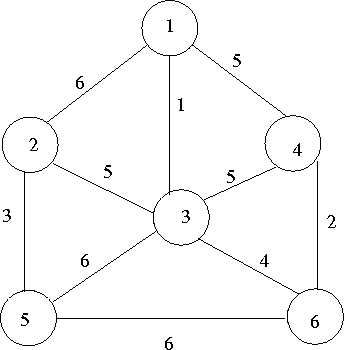T = ![]() ;
;
U = { 1 };
while (U![]() V)
V)
{
let (u, v) be the lowest cost edge
such that u![]() U
and v
U
and v![]() V
- U;
V
- U;
T = T![]() {(u, v)}
{(u, v)}
U = U![]() {v}
{v}
}
}
Theorem: Prim's algorithm finds a minimum spanning tree.
Proof: Let G = (V,E) be a weighted, connected graph. Let T be the edge set that is grown in Prim's algorithm. The proof is by mathematical induction on the number of edges in T and using the MST Lemma.
Basis: The empty set ![]() is promising since a connected, weighted graph always has at least one
MST.
is promising since a connected, weighted graph always has at least one
MST.
Induction Step: Assume that T is promising just before the algorithm adds a new edge e = (u,v). Let U be the set of nodes grown in Prim's algorithm. Then all three conditions in the MST Lemma are satisfied and therefore T U e is also promising.
When the algorithm stops, U includes all vertices of the graph and hence T is a spanning tree. Since T is also promising, it will be a MST.
Implementation of Prim's Algorithm
Use two arrays, closest and lowcost.
 |
 |
| U = {1} | V - U = {2, 3, 4, 5, 6} | |
| closest | lowcost | |
| V - U | U | |
| 2 | 1 | 6 |
| 3 | 1 | 1 |
| 4 | 1 | 5 |
| 5 | 1 | |
| 6 | 1 | |
Select vertex 3 to include in U
| U = {1, 3} | V - U = {2, 4, 5, 6} | |
| closest | lowcost | |
| V - U | U | |
| 2 | 3 | 5 |
| 4 | 1 | 5 |
| 5 | 3 | 6 |
| 6 | 3 | 4 |
| Now select vertex 6 | ||
| U = {1, 3, 6} | V - U = {2, 4, 5, 6} | |
| closest | lowcost | |
| V - U | U | |
| 2 | 3 | 5 |
| 4 | 6 | 2 |
| 5 | 3 | 6 |
| Now select vertex 4, and so on | ||